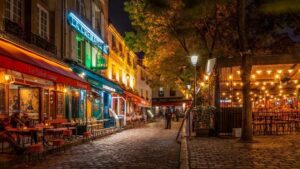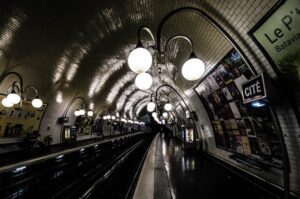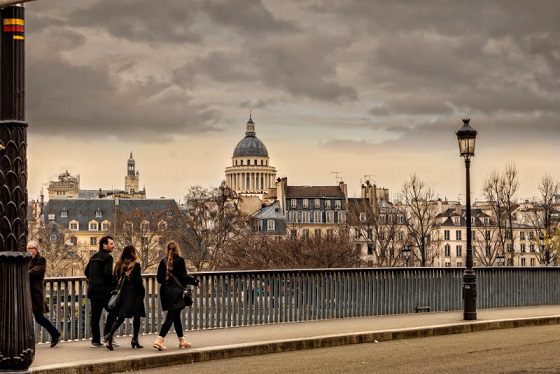 As the days grow shorter, the season for city breaks begins. Travel portals see an increase in searches for city breaks, weekend getaways and other short trips during this period. In particular, European capitals, which have a unique charm in September, October and November, are trendy. The summer tourist crowds have all but disappeared. Instead, the city increasingly belongs to the locals. This phenomenon is especially noticeable in Paris.
As the days grow shorter, the season for city breaks begins. Travel portals see an increase in searches for city breaks, weekend getaways and other short trips during this period. In particular, European capitals, which have a unique charm in September, October and November, are trendy. The summer tourist crowds have all but disappeared. Instead, the city increasingly belongs to the locals. This phenomenon is especially noticeable in Paris.
Experience the Paris of the Parisians. Or not?
In the summer, many parts of Paris are overrun with tourists. Many Parisians escape this by spending the summer in the country and returning after the summer holidays. “If you want to experience the Paris of the Parisians, you have to go in the fall,” many insiders claim. Fact is: Paris has an extraordinary atmosphere in the fall and lives up to its nickname “City of Light”. Be it in the morning, when the sun breaks through the fog, or in the evening, when the early darkness reveals the city’s magic.
However, you will not find the city without tourists. At most, you might be lucky in November and experience a quieter time before Christmas. Fall is also famous, especially with gourmet travellers who look forward to wine festivals and food markets.
Culinary Season in Full Swing.
Many typically French products find their way to the capital in the fall. Numerous wine festivals, such as the one in Montmartre, attract visitors from all over the world. The Fête des Vendanges de Montmartre features French food, music, and wine around the oldest of Paris’ ten vineyards.
In addition, the cooler temperatures invite visitors to feast. Many restaurants and cafes change their menus from summer salads to hearty French classics. A stroll through the many patisseries is also worthwhile in the fall.
Another event highlight from September to December is the Festival d’Automne à Paris, the Paris Autumn Festival, which hosts contemporary international artists in music, film, theater, and dance: The festival is not held in one location but in nearly 40 different venues.
Paris without a Guilty Conscience.
The French capital has set itself the goal of becoming significantly greener and more sustainable. We have already reported on this in this newsletter about sustainable urban development. The city plans to turn the Seine into a swimmable body of water by next year’s Olympic Games—a measure from which the Parisians, the tourists, and nature benefit.
Once on site, walking is the most environmentally friendly way to get around. This works particularly well if the accommodation is located in the city centre so that distances are short. For example, the three Green Pearls® hotels, Le Pavillon, Malar, and Amélie, are all within walking distance of Paris’ main attractions while offering guests a quiet retreat. They are all part of the Green Spirit Hotels, designed to be eco-friendly and affordable, with an artistic flair.
More distant destinations, such as the various chateaux, the Eco Quartier Clichy Batignolle, or the Coulée Verte, a disused and now greened railroad line, are easily reached by metro. It also takes you to the famous Père Lachaise cemetery east of the city. A visit is especially recommended in fall: the colourful foliage, the stillness of autumn, and the occasional mist give the place a mystical touch. The same goes for the many parks in the French capital.
Another recommendation for the fall, specifically for rainy days, is visiting the Parisian arcades. These are covered arcades with numerous galleries. 20 of them date back to the beginning of the 19th century.
Travel green, stay green.
Paris is one of those cities that can be easily reached by train from almost anywhere. Numerous train and long-distance bus connections exist, especially from neighbouring countries. Starting in December, there will also be a night train from the German capital Berlin via Strasbourg to Paris.
 Travelling by train (or long-distance bus) is more environmentally friendly than driving; it also saves you the hassle of finding a parking space and the sometimes astronomical parking fees in Paris. In addition, local mobility is more than provided by the metro network and walking distance to most sights, mainly if the chosen sustainable accommodation is located in the city centre.
Travelling by train (or long-distance bus) is more environmentally friendly than driving; it also saves you the hassle of finding a parking space and the sometimes astronomical parking fees in Paris. In addition, local mobility is more than provided by the metro network and walking distance to most sights, mainly if the chosen sustainable accommodation is located in the city centre.
Sustainable hotels in Paris do not have to be expensive.
That’s what the three Green Spirit Hotels prove. Le Pavillon, Amélie, and Malar offer creative, eco-friendly, and budget-friendly accommodations in the heart of Paris. Free spirits and the artistically inclined will feel right at home in the individually designed rooms. Comfortable beds, a rich breakfast with local organic products, and (partial) shielding from electrosmog allow guests to start the day rested and full of energy.
In addition, the owners focus on keeping their environmental footprint as small as possible. This includes water and energy conservation measures, fair wages for employees, most of whom come from Paris, no disposable plastic products, and other sustainability measures that can be read about on the hotels’ Green Pearls® pages.
Summary: Sustainable Trip to Paris in the Fall.
Plan to travel by train or coach (from December 2023, it will be possible to travel by night train from Germany).
Choose sustainable accommodation in the city centre, such as the Green Pearls® partners Hotel Le Pavillon, Hotel Amélie, or Hotel Malar.
On-site: Walk, cycle, or take the metro.
Support the local culture and buy souvenirs at the various autumn markets.
Take a tour with a local guide (e.g. Père Lachaise cemetery); eat at local restaurants instead of chain restaurants (plus experience authentic French cuisine).




















